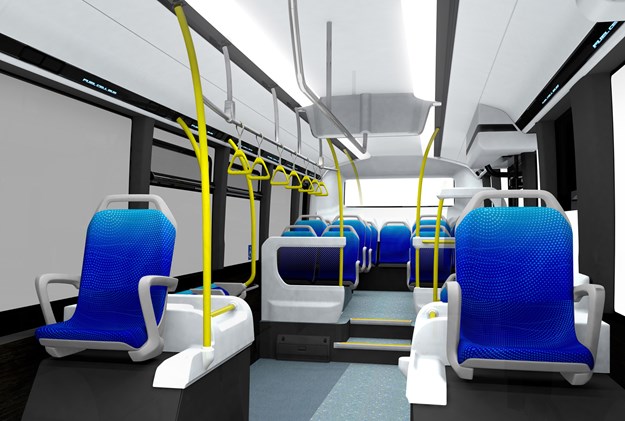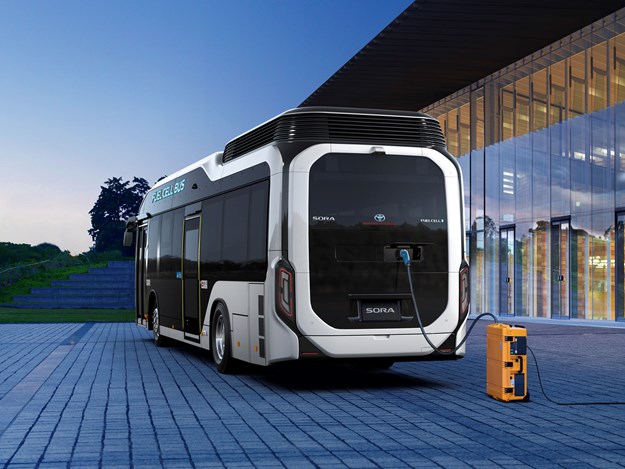JAPANESE VEHICLE GIANT Toyota has recently improved the ‘preventative safety performance’ of its ‘Sora’ Fuel Cell Electrified Vehicle (FCEV) bus, which is to be showcased in action during the summer 2020 Tokyo Olympic Games, July 24 – August 9 next year.
Toyota Motor Corporation (Toyota) says approx. 90 per cent of its vehicles will be electrified at the Olympic and Paralympic Games Tokyo 2020, aiming to achieve the lowest emissions target level of any official vehicle fleet used at such events and reduce the burden on the environment.
The company will provide a total of around 3,700 mobility products and/or vehicles. Out of those mobility products and/or vehicles, 2,700 will be part of the official fleet providing transportation support between venues during the Olympic Games.
Aside from that official fleet, Toyota will also support Games operations with other vehicles, including the mass-transit hydrogen fuel cell bus called the Sora.
Specifically, improved measures of the Sora – an acronym for Sky, Ocean, River, Air – representing the earth’s water cycle – come via the use of ITS functions (Intelligent Transport Systems), Toyota states. Additionally, the Sora’s transportation capacity, speed, and punctuality have been expanded, the company explains.
As a public transport bus, the Sora requires both a high operation rate and high safety performance at all times, says Toyota. To this end, the updated model includes a function that cautions the driver when making right turns at intersections, and a system that enables passengers to activate an emergency stop in urgent situations, such as if the driver suddenly falls ill, it explains – as developed on Hino (Toyota subsidiary)/Isuzu models.
The updated Sora is equipped with a new system that shares information on the distance between the vehicles, to prevent two or more buses traveling in a convoy from being separated at traffic lights and bus stops, leading to overall improvements in transportation capacity, speed, and punctuality of the buses, it claims.
PREVENTATIVE SAFETY FUNCTIONS
The improvements made in this update are:
1. ITS Connect Vehicle-to-Infrastructure Communication System (DSSSDriving Safety Support Systems)
– Infrastructure devices and vehicles share information on oncoming vehicles, pedestrians, and traffic lights to increase driver awareness;
1B. Right-turn Collision Caution
– When turning right at an intersection, the system activates an alert to indicate potential hazards for the driver, such as oncoming vehicles or pedestrians on the road;
1C. Red Light Caution
– When approaching a red light at an intersection, the system activates an alert if the driver does not ease off the accelerator or if the driver does not see the red light;
1D. Red Light Deceleration Assist
– When approaching an intersection and stopping for a red light is likely, the system encourages early deceleration;
1E. Signal Change Advisory
– In order to prevent delayed starts, a screen displays the remaining time until the traffic light changes: Right-turn Collision Caution; Red Light Caution; Red Light Deceleration Assist; Signal Change Advisory.
2. Emergency Driving Stop System (EDSS)
If an urgent situation occurs, such as the driver suddenly falling ill, this system allows the driver or passengers to press the emergency brake switch to decelerate the bus and bring it to a stop. The control system has been designed specifically for public transport buses, where the safety of standing passengers is crucial, explains Toyota. As the bus starts to decelerate, red flashing lights and a voice alerts passengers to the emergency; those outside the vehicle and nearby are alerted to the emergency via a horn and flashing stop lights and hazard lights, it says.
3. Collision Warning System
If the millimetre-wave radar installed at the front of the bus detects there is a risk of colliding with a vehicle or obstacle ahead on the road, it alerts the driver with a warning buzzer and activates a warning notification on the monitor screen. The system considers the safety of standing passengers and seated passengers who have not fastened their seatbelts, and supports the driver in avoiding collisions by assisting with steering, claims Toyota.
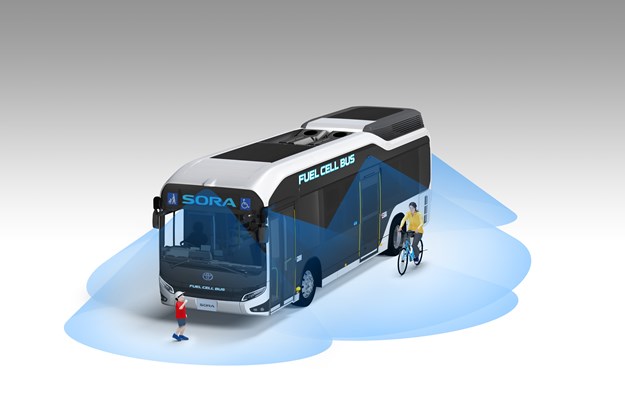
TRANSPORTATION CAPACITY
1. ITS Connect Vehicle-Convoy Information Service
The service uses information on buses, bus order, and distance between buses traveling in a convoy to prevent the convoy from being separated at traffic lights and bus stops; this contributes to improved transportation capacity, speed, and punctuality, says Toyota.
Vehicle-Convoy Recognition Function
A. Using vehicle-to-vehicle communications and millimetre-wave radars, the system recognises information – within the limits of maximum bus numbers for any given section – on the buses, bus order, and distance between buses traveling in convoy, and notifies drivers of the convoy size.
B. In order to ensure that the entire convoy can pass through a set of traffic lights at the same time, the last bus in the convoy sends a request to the traffic lights to remain green for an extended period of time.
C. Vehicle-to-vehicle communications and millimetre-wave radars are used to recognize the formation of a vehicle convoy.
D. Bus Stop-Start Information System. This recognises when customers board and alight from buses traveling in convoy, and helps ensure the entire convoy leaves the bus stop at the same time, Toyota explains.
2. ITS Connect Communicating Radar Cruise Control
The buses are equipped with all-speed radar cruise control, which supports smooth acceleration and deceleration, the company says. If a preceding vehicle is also equipped with communicating radar cruise control, the bus uses information shared via vehicle-to-vehicle communications to respond rapidly to the acceleration and deceleration of the preceding vehicle, which enables the buses to follow smoothly, apparently. The system also contributes to the maintenance of a constant inter-vehicle distance when traveling in a convoy on dedicated bus roads (Dedicated bus roads are for the use of public transport buses only), and to the stable driving speed of the vehicles that follow.
SPEED AND PUNCTUALITY
1. ITS Connect Wave-Type Public Transportation Priority System with Convoy Function
Using dedicated ITS radio, the system sends requests to infrastructure devices to extend green light times or reduce red light times. When traveling in a convoy, the last bus in the convoy sends a request to extend the green light time, thereby reducing the risk of the convoy from being separated by a red light.
BARRIER-FREE
1. Automatic Arrival Control System (Optional)
The system detects guidance lines on the road surface and automatically steers and decelerates the bus, causing the bus to stop at the designated boarding and alighting location, and minimising the gap to the bus stop itself, Toyota states. This assists boarding and alighting for passengers using strollers or wheelchairs, it adds.
Specs
MAKE: Toyota
MODEL: Sora FCEV
DIMENSIONS: Length – 10,525mm x Width – 2,490mm x Height
– 3,350mm
CAPACITY: 79 (Seated passengers – 22 + standing passengers – 56 + 1 driver)
STORAGE: Fuel Cell – solid polymer electrolyte Toyota FC Stack; POWER – Maximum output 114kW ×2 (155PS ×2)
MOTOR: AC synchronous; POWER – Maximum output 113kW ×2 (154PS ×2); TORQUE – Maximum 335Nm ×2 (34.2kgf m ×2)
TANK: 10x (70 MPa) High-pressure hydrogen tanks; VOLUME – internal 600 litres
BATTERY: Drive – Nickel-metal hydride
EXTERNAL POWER SUPPLY: (sold separately) Maximum output 9kW/235kWh
Photography: courtesy Toyota Motor Corp



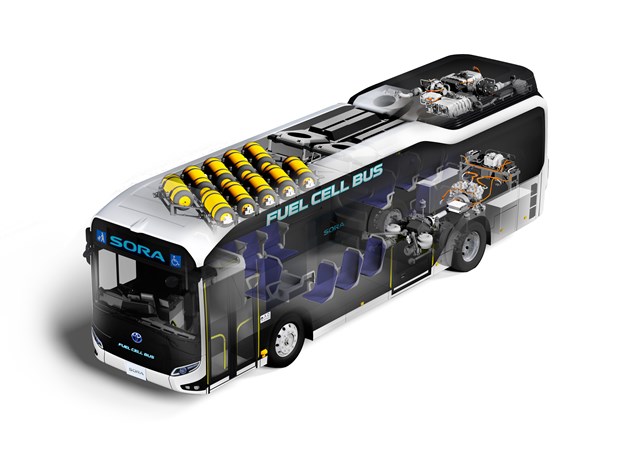

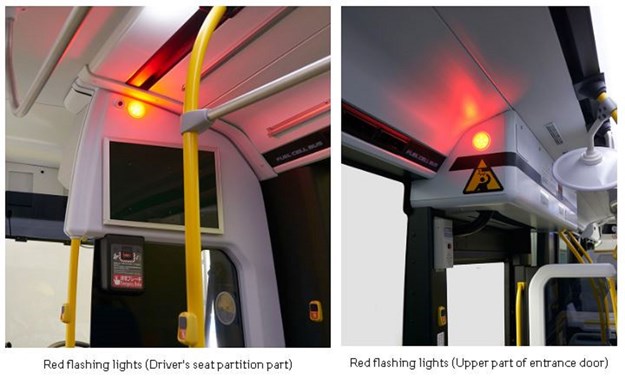
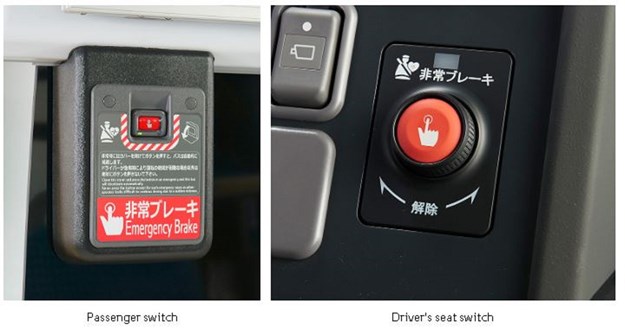
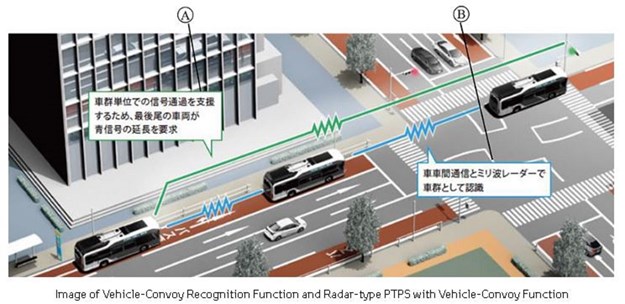
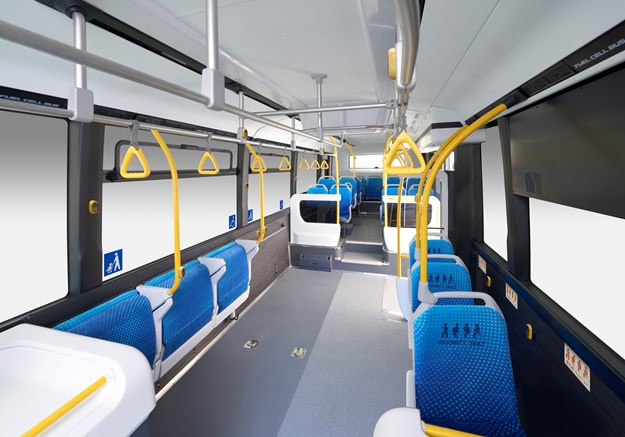
.png)
